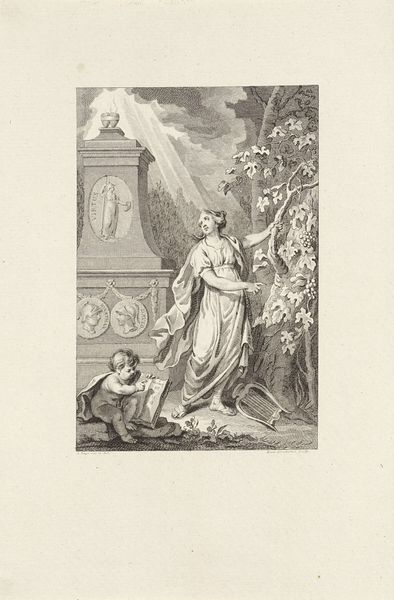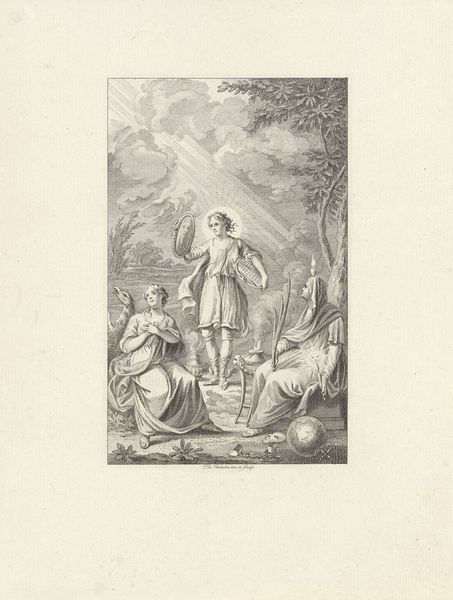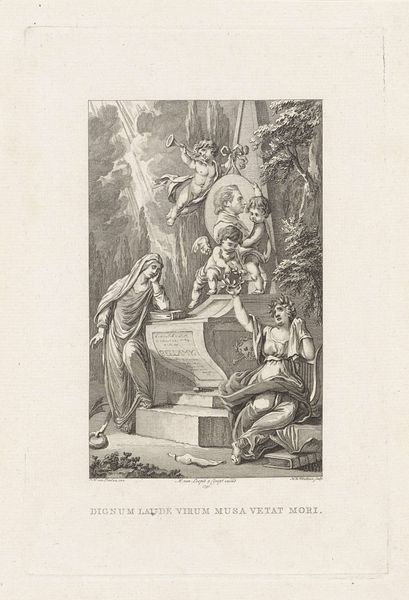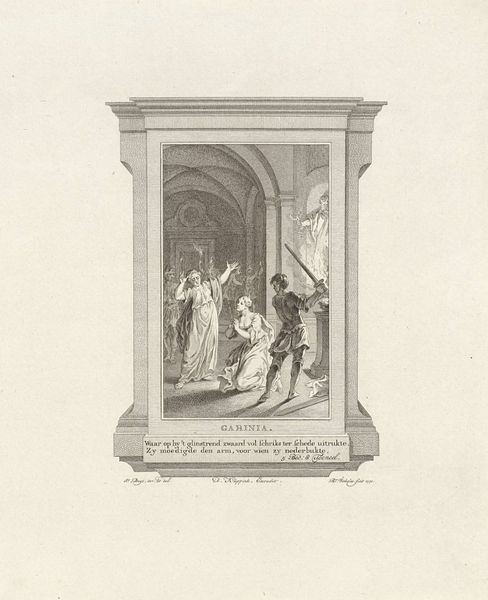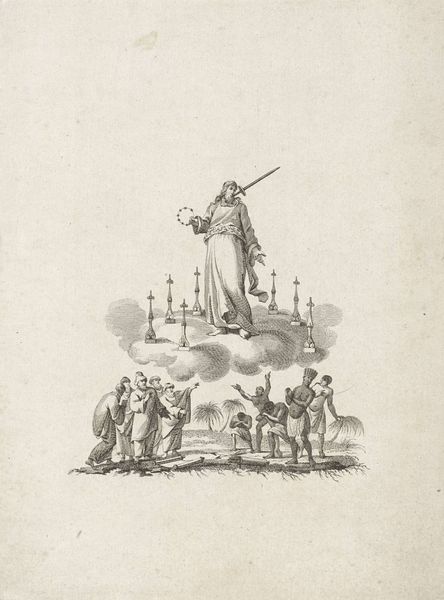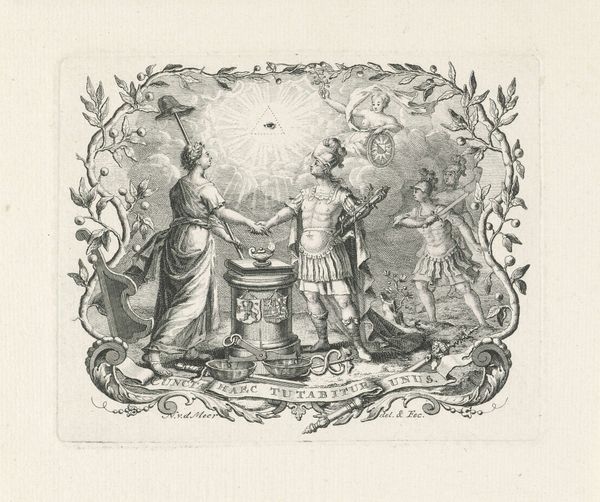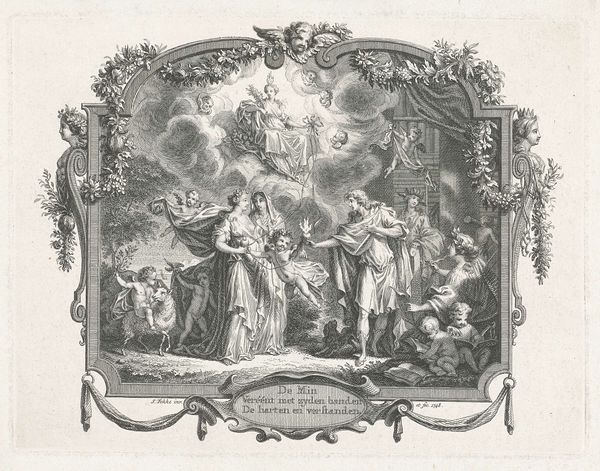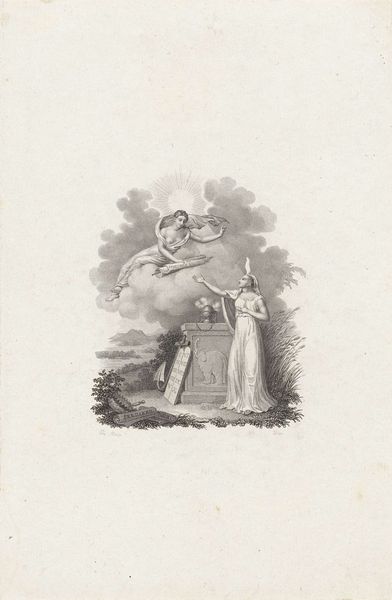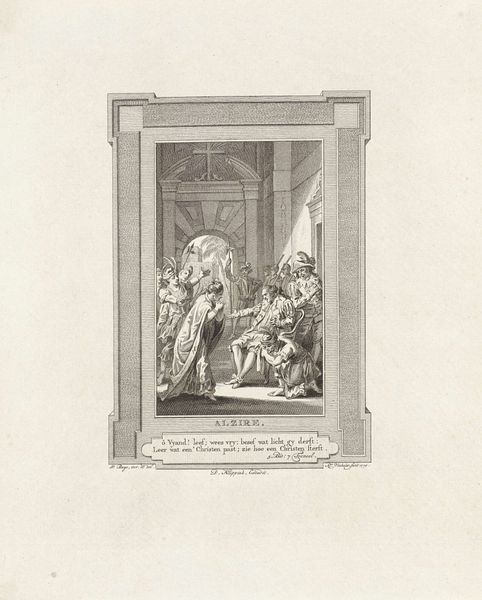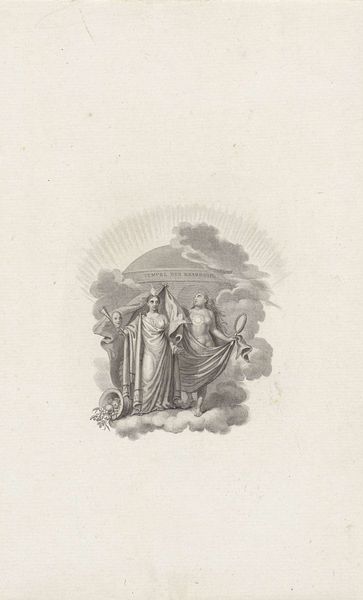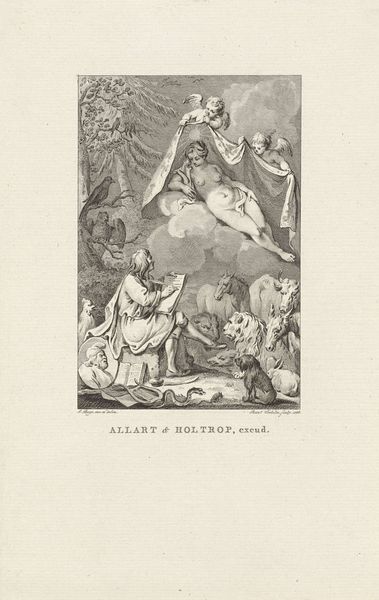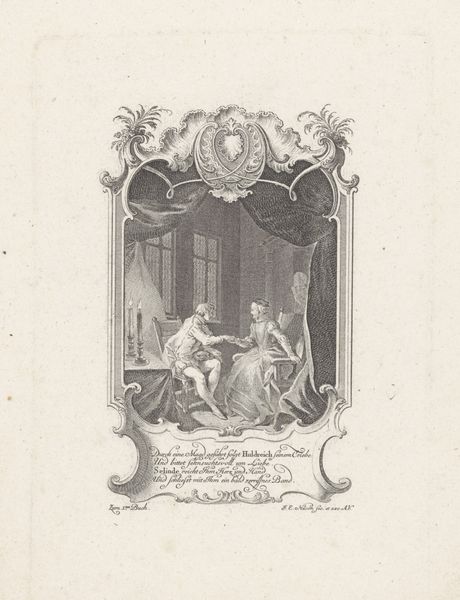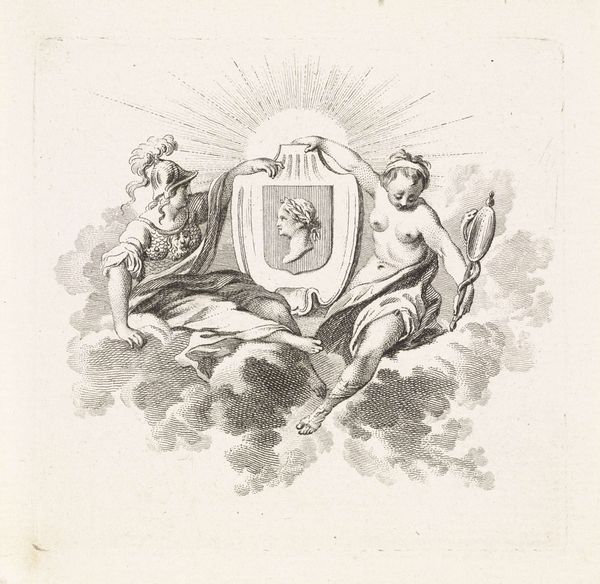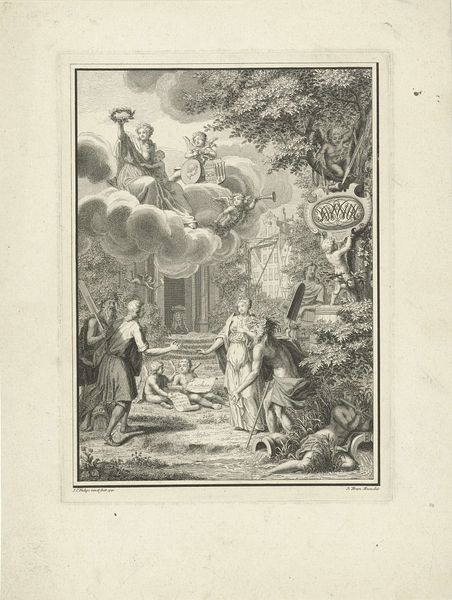
Dimensions: height 234 mm, width 151 mm
Copyright: Rijks Museum: Open Domain
This engraving, "Jongen en putti rond een altaar met de Bijbel" was made by Reinier Vinkeles, likely in the late 18th or early 19th century, using the intaglio process. This painstaking method involves incising an image into a metal plate, applying ink, and then using a press to transfer the image onto paper. The material qualities here are critical. The crisp lines and delicate gradations of tone are achieved through skilled manipulation of the burin, the tool used to cut into the plate. Vinkeles would have needed to master the control of pressure and angle to create depth and texture. The social context is also important. Engravings like this were often produced in multiples, functioning as illustrations in books and other printed materials. The labour-intensive nature of the intaglio process meant that it was often undertaken by skilled artisans working in workshops. This image reflects a visual culture in which craftsmanship and print production were deeply intertwined, playing an important role in disseminating ideas and images. Considering materials, making, and context allows us to appreciate the skill and cultural significance embedded in this small print.
Comments
No comments
Be the first to comment and join the conversation on the ultimate creative platform.
